Ancient Greek philosophers like Aristotle (322BC); Plato (347BC) as well as Socrates (399BC) contributed the basis for theorizing the learning process (Hammond et al. 2001, p.2). Descartes (1596-1650) reintroduced the Platonic concept of innate knowledge (Hammond et al. 2001, p.3).
Descartes scholarly works provided leverage for the behavioral psychologists seeking to understand the genesis of behavior as well as laid the bases for furtherance by the cognitive scientists who had an interest in understanding the thinking process (Hammond et al. 2001, p.4). Along these lines Locke (1632-1704) worked on child’s thinking maturity process as influenced by individual experiences. Rousseau (1712-1778) was among the first philosopher to argue that education should be tailored to suit the child (Hammond et al. 2001, p.4).
Kant (1724-1804) enhanced further the works of Plato on the rationalist theory by arguing that prior knowledge exists before the current experience. Kant was among the initial philosophers to recognize the processes of the mind and that the mind was integral of the thinking process and has the capacity to add value to the development of thoughts (Hammond et al. 2001, p.5).
Modern psychologists have relied on the works by the likes of Descartes, Kant and Charles Darwin to study how people learn and discover better approaches for use in teaching (Hammond et al. 2001, p.5).
Piaget (1896-1980) is credited with recognizing that learning is a developmental cognitive process where the learners construct knowledge instead of receiving from the teachers (Hammond et al. 2001, p.6). A Russian scholar Vygotsky (1896-1934) further developed Piaget works by giving it a cultural dimension (Hammond et al. 2001, p.7).
Twitter is an internet based multimedia technology tool that allows interactive engagement by its users. This technology tool is a social networking site with audio and visual capabilities (Hussain et al., 2012, p.189). Twitter allows learners and teachers to create and propagate their own virtual communities where they can interact freely (Richardson and Swan, 2003, p.69). This virtual environment created forms the bases for the learning experience (Kreijns et al. 2003, p.336).
Paradigm shifts in learning experience brought by the social and multimedia tools:
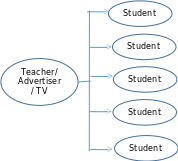
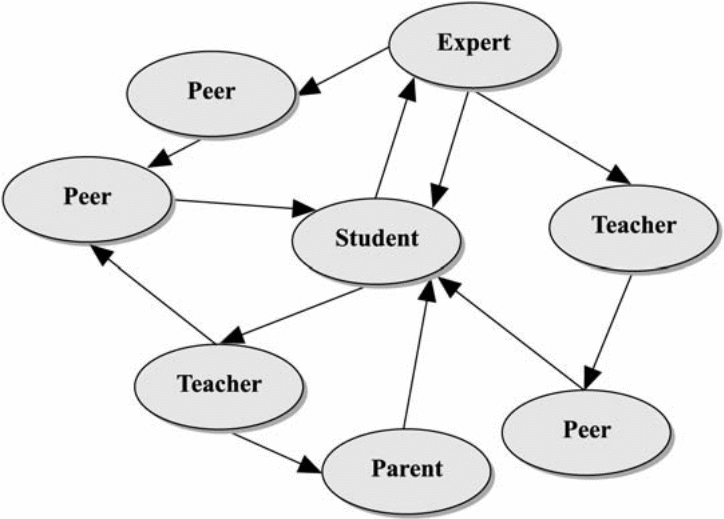
In order to integrate Twitter’s multimedia perspective into the cognitive learning, assumptions will be made on mind processing. These assumptions should be in-line with the cognitive learning theories by psychologists like Locke, Kant, Piaget and Vygotsky. The minds information processing system interfaces are the audio and visual channels, that is for sound and pictures.
The dual channel has bases on the works of Paivolo’s (1986) on the dual coding theory and Baddeley’s (1998) theory of working memory (Mayer and Moreno, 2003, p.44). Twitter pages have images and wording that can provoke mind processing. The second assumption that each channel has limits during the human information processing (Cobb, 1997, p.21). This is at the center of the Cognitive Load theory fronted by Chandler and Sweller (1991).
The third assumption is based on generative-learning theory and selecting-organizing-integrating theory of active learning fronted by Wittrock (1989) and Mayer (1999), respectively (Mayer and Moreno, 2003, p.44). The integration of Twitter into learning has the influence as illustrated below.
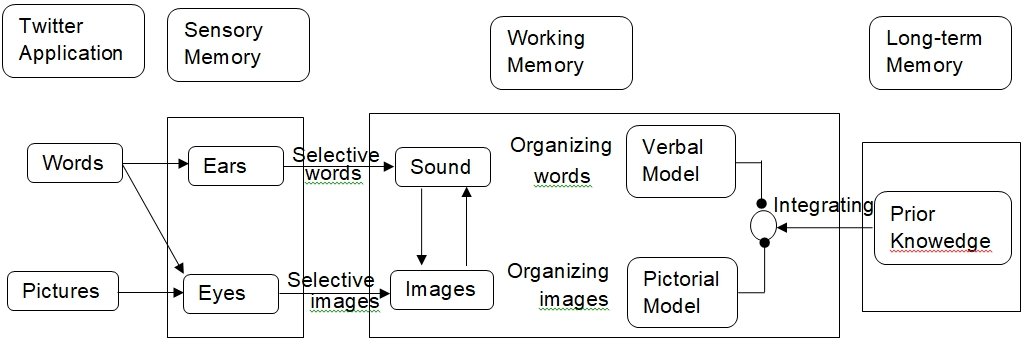
Modified: Mayer and Moreno (2003, p.44)
The effect of behaviorist learning theory on education has led to advancement in structure and the sequence of curricula as well as the use of instructional programs and workbooks (Hammond et al. 2001, p.6). The advancement has made it easy for learners to gain certain skills, particularly those offered through rote through reinforcement and practice. Skinner (1904 –1990) is credited for the modern behaviorism (Hammond et al. 2001, p.7).
The elementary principle that needs to be observed in using multimedia is to ensure that it is constructive in generating the desired stimulus. This means prior to introducing Twitter to the learning environment the stimulus should have already been predicted and deemed reliable. Twitter supports back channeling that is an active real-time online conversation behind or in conjunction with live spoken remarks or presentation. Take for instance the learning session in the figure below.
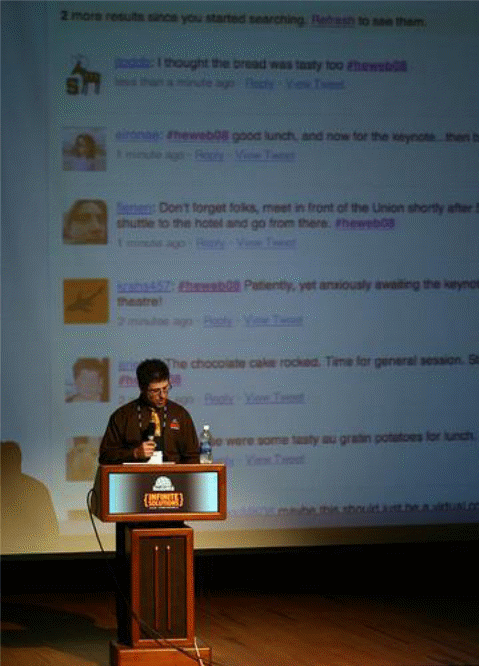
Source: Western University (2011)
Two assumptions can be made learners are active and respond to environmental stimuli as well as learning is a behavioral change due to experience and depends on the association developed by the moment the behavior occurs and the behavior itself.
Twitter allows active learning participation and students can add their perspective through commenting. Students and teachers can add elaborations and links in order to enhance learning towards the desired goal. Moreover, even those who are not physically present can participate. Twitter provokes interest and keeps learners alert.
Based on the works of Albert Bandura on social learning theory that learning can be experienced through observing another person’s actual behavior (live model), verbal exchange as well as use of symbolism where real or fictional characters demonstrate the behavior (Grusec, 1992, p.778).
Live models can be likened to the Twitter page followers as illustrated in the figure below.

Source: Western University (2011)
Verbal exchange can be likened to the Twitter interactive exchange as illustrated in the figure below.
@larryzapeyeRe: those picsof TO and Zenyattathat have been tweeted… what are the red blotches/spots on her front wraps? 6:16 PM Oct 17th, 2010 via Twitter for iPhone in reply to larryzapeye
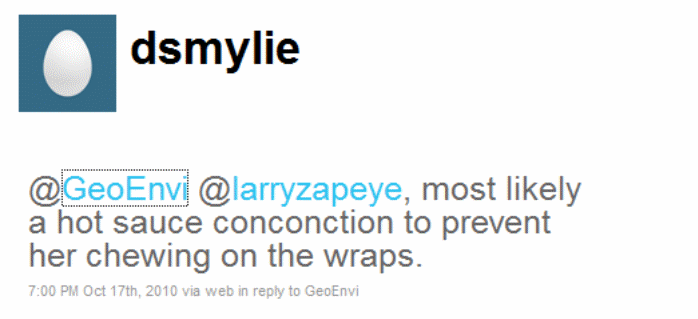
Source: Western University (2011).
Use of symbolism can be likened to the Twitter page for followers as illustrated in the figure below.
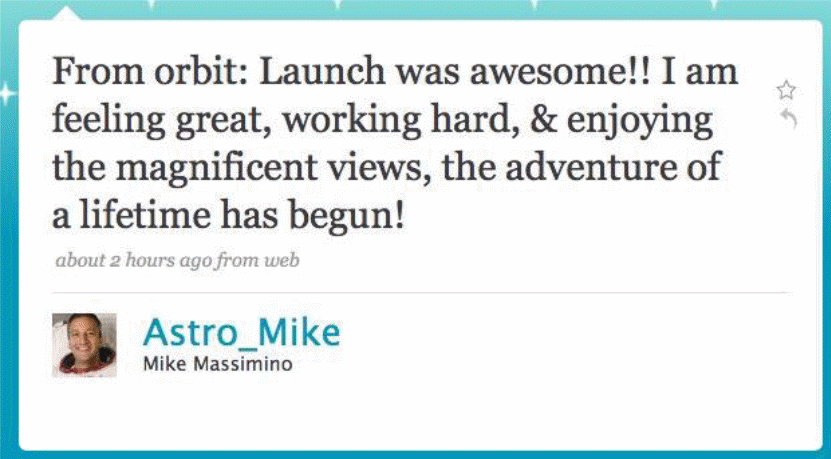
Source: Western University (2011).
References
Cobb, T. (1997). Cognitive Efficiency: Toward a Revised Theory of Media. ETR&D 45, 21-35.
Dawley, L. (2009). Social network knowledge construction: emerging virtual world pedagogy. Emerald Group Publishing Limited 17(2), 109-121.
Grusec, J. E. (1992). Social Learning Theory and Development Psychology: The Legacies of Robert Sears and Albert Bandura. Developmental Psychology 28(5), 776-786.
Hammond, L-D., Austin, K., Orcutt, S. and Rosso, J. (2001). How People Learn: Introduction to Learning Theories. Web.
Hussain, I., Gulrez, N. and Tahirkheli, S. A. (2012). Academic Use of Social Media: Practices and Problems of University Students. International Conference on Education and Management Innovation IPEDR 30, 189-194.
Kreijns, K., Kirschner, P. A. and Jochems, W. (2003). Identifying the pitfalls for social interaction in computer-supported collaborative learning environments: a review of the research. Computers in Human Behavior 19, 335–353.
Mayer, R. E. and Moreno, R. (2003). Nine Ways to Reduce Cognitive Load in Multimedia Learning. Educational Psychologist 38(1), 43–52.
Richardson, J. C. and Swan, K. (2003). Examining social presence in online Courses in relation to students’ Perceived learning and satisfaction. JALN 7(1), 68-88.
Western University (2011). Using Social Media to Promote Collaborative Learning. Web.